Note: Measurements taken in the anechoic chamber at Canada's National Research Council can be found through this link.
As I write this article, the annual High End show is taking place in Munich, Germany. Considered by many to be the preeminent audio show on the planet, High End not only attracts exhibitors and visitors from all over, it’s a venue for many product debuts. If you want to see where boutique audio is and where it’s going, High End is the place to find out. Of the products debuted at this year’s show, the exorbitantly high prices of a few were off-putting. Featured this year were $30,000/meter speaker cables, a €50,000 digital-to-analog converter, a €140,000/pair monoblock amplifier, and speakers costing €500,000/pair. While I understand that these products are as much about prestige and pride of ownership as about absolute performance, those prices are eye-popping.
What really caught my attention at High End was a pair of stand-mounted speakers from Ambitious Audio Design for €80,000/pair. The price begged a question: What does this company know about designing and building loudspeakers that the rest of the industry has yet to figure out? I’m not suggesting that these speakers aren’t good -- I’ve never heard them. Heck, they may even sound spectacular. But . . . €80,000? A few years from now, if these speakers need to be repaired, will their manufacturer even be around?
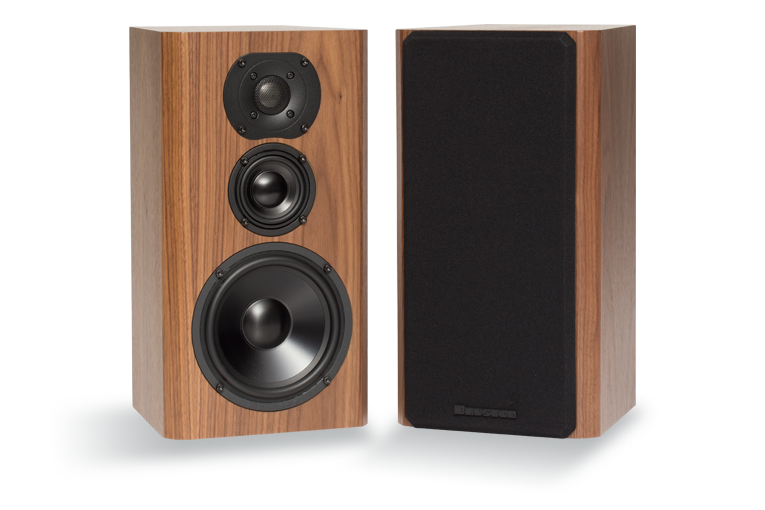
Obviously, products such as these are statistical outliers that don’t reflect the vast majority of what’s for sale in the High End. More important, it’s no secret that one can purchase a wholly satisfying, solidly performing high-end stereo system without having to take out a second mortgage. Which brings me to the subject of this review: Bryston’s Mini A, a bookshelf speaker that retails for $1200 USD per pair and comes with a 20-year warranty.
Description
Bryston’s Mini A went on sale early in 2015 and is the smallest loudspeaker in the company’s catalog. It’s a three-way design, something rarely encountered in a speaker measuring only 15.5”H x 8.5”W x 8.25”D and weighing just 11 pounds. The Mini A combines a 1” titanium-dome tweeter, a 3” aluminum-cone midrange, and a 6.5” aluminum-cone woofer. A dedicated midrange driver was included to limit the woofer’s bandwidth to a narrower-than-usual range in the lower part of the audioband, thus enabling it to go deeper. The Mini A’s claimed frequency response is 60Hz-20kHz, ±3dB. The drivers include die-cast aluminum baskets and beefy magnets to ensure that they can handle lots of power and dissipate heat.
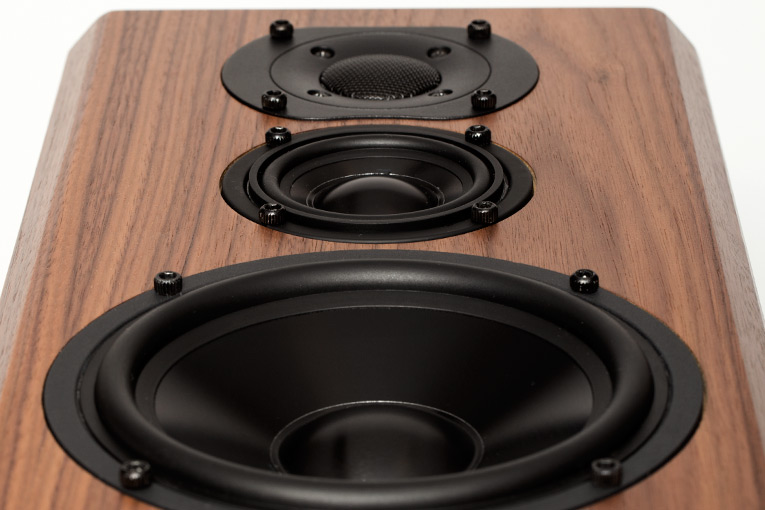
The Mini A’s cabinet is made of 0.75”-thick MDF; the interior is well braced, to minimize resonances that would otherwise color the sound. The little speaker feels solid, as you’d expect from something backed by a 20-year warranty -- a length of guarantee that’s rare even among speaker makers, who typically offer longer warranties than electronics manufacturers. But Bryston warrants their electronics for 20 years as well -- clearly, they have great confidence in the durability of everything shipped from their factory.
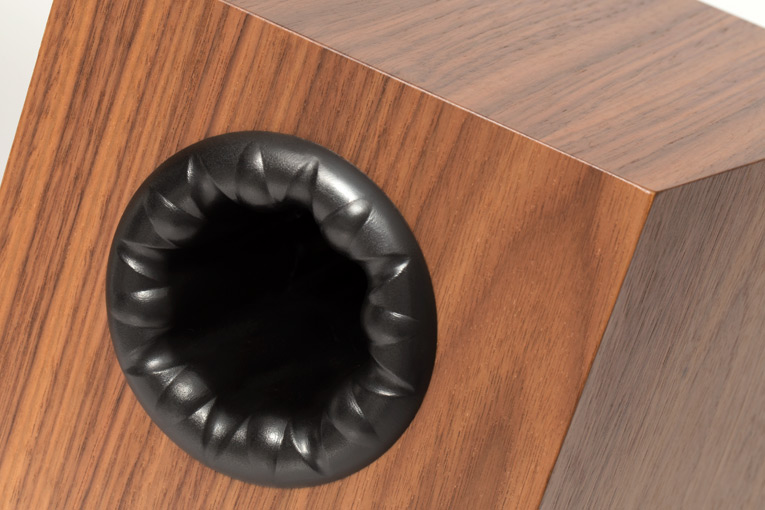
On the rear panel of the Mini A is a flared port designed to reduce turbulence in the air rushing through it. Below this are two sets of gold-plated binding posts, to permit biwiring or biamping; the posts accept spades, banana plugs, or bare wire. With an anechoic sensitivity of 87dB/W/m and a nominal impedance of 8 ohms, the Mini A isn’t terribly difficult to drive -- Bryston recommends an amplification range of 10-175Wpc. Given all that, the Mini A could prove a good match for the right tube amp, but I’ll leave it to valve aficionados to experiment with that.
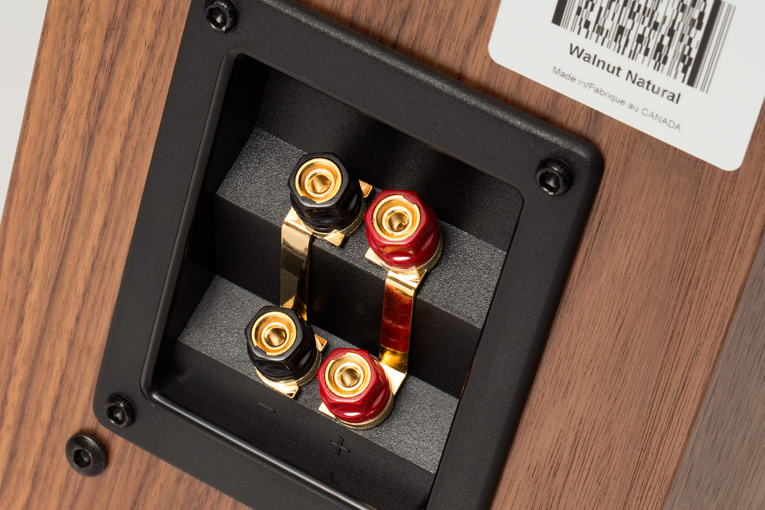
The Mini A is similar in appearance to its somewhat bigger sibling, the Mini T. The side panels of both angle inward toward the rear, making the cabinets less obtrusive, and their magnetically attached grilles make for a cleaner-looking façade. However, unlike the grille on the Mini T, the Mini A’s grille has a much lower profile that gives it a sleeker appearance. The basic Mini A comes in a choice of Boston Cherry, Natural Cherry, or Black Ash vinyl veneers; another $180 will buy you real hardwood, which looks far nicer -- I appreciated Bryston’s Walnut veneer. My biggest complaint about the Mini A is that I wish its drivers were mounted without visible screws. There are eight screws visible on the tweeter alone, which detracts from an otherwise clean-looking design.
System
I inserted the Mini A’s into a Bryston-centric system. Sitting atop 24”-high Osiris stands, they were connected to a Bryston B135 SST2 integrated amplifier using AudioQuest Comet speaker cables. An NAD C 565BEE CD player and an Apple MacBook running Audirvana software fed digital data to a Bryston BDA-2 DAC through, respectively, an i2Digital X-60 digital coaxial cable and an AudioQuest Forest USB cable. Analog duties were performed by a Thorens TD-160HD turntable fitted with a Rega Research RB250 tonearm and Dynavector DV-10X5 high-output moving-coil cartridge, all feeding a Lehmann Audio Black Cube SE phono stage. All electronics were plugged into an ExactPower EP15A power conditioner/regenerator.
Sound
After setting up the Brystons and giving them a few days to break in, the first thing I noticed was that, similar to the Mini T, the Mini A had a clean, seemingly distortion-free sound throughout the audioband. As a result, I often found myself playing them rather loudly. At sane -- sometimes insane -- volumes, the Mini A’s responded well, producing dynamics that never compressed, but remained composed and lively at any level I could tolerate. Evidently Bryston’s speakers, like their amplifiers, are built to be pushed, not treated like delicate flowers.
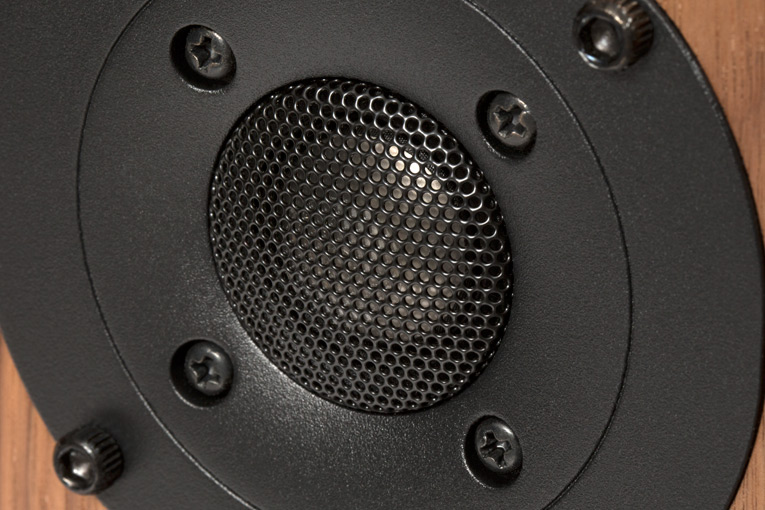
The second thing that struck me was that the Mini A’s sounded more forward than my reference speakers. When I listened to Low and Dirty Three’s cover of Neil Young’s “Down by the River,” from In the Fishtank 7 (CD, Konkurrent LC6110), the music seemed closer, which gave it more presence in my room. Even if this track didn’t sound quite as cavernous as I’ve heard it through bigger speakers, there was still a clear feeling of stage depth, and a sense of space between the musicians of these two bands.
When I listened to Young perform the same song solo for an appreciative audience at Toronto’s legendary Massey Hall in the winter of 1971, on Massey Hall 1971 (CD, Reprise 43328-2), the squeaky-clean Brystons produced highly transparent, crystal-clear sound. The presence of the crowd was palpable; as they call out to Young to play this song, I heard plenty of low-level details through the Mini A’s that helped me imagine what it must have been like to have been in the audience that night. Young’s voice was lucid, his position unwavering at center stage. His acoustic guitar sounded warm and full, the plucks of the strings crisp and incisive. The crowd was spread out across the front of the room, creating a good sense of the size of Massey Hall. As with Low and Dirty Three’s recording of the song, I’ve heard this version sound even bigger in my room, but only with much larger speakers with considerably more bass extension.
To test the Brystons’ bass abilities, I played “Angel,” from Massive Attack’s Mezzanine (CD, Virgin 8 45599 2). The Mini A’s acquitted themselves fairly well for relatively small speakers, producing good bass wallop that was tightly controlled and sufficiently deep. The low end of “Angel” ventures into the subterranean -- to hear it, you’ll need larger speakers and/or a subwoofer, which Bryston makes as well. If you crave deep bass, you might want to consider one of those options. I thought the Mini A’s were able to generate enough low-end energy for most of what I listen to, though what I found most impressive was the quality of the bass rather than its absolute depth. Massive Attack’s “Inertia Creeps” sounded punchy and articulate through the Brystons’ 6.5” woofers; in other words, they could generate quick, detailed, fast-sounding bass that let me better hear nuances and subtleties in the low frequencies.
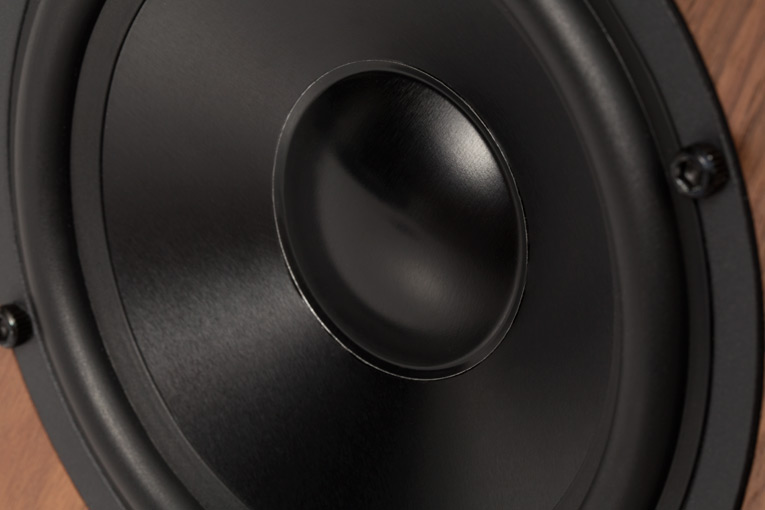
As I often do when I review speakers, I played War Dance, from Respighi’s Belkis, Queen of Sheba: Suite, with Eiji Oue leading the Minnesota Orchestra (CD, Reference RR-95CD). With the Mini A’s, I was treated to a sound that remained clean and composed as I turned up the volume. Within their low-frequency limits the Brystons were able to faithfully reproduce the punishing percussion in this recording, sounding big and powerful despite their small size. What I especially enjoyed was that the Mini A’s had no problem navigating the dramatic dynamic swings in War Dance -- at times, the piece is as rapid-fire as a machine gun. The Brystons clearly conveyed this fierce energy, letting me readily hear what was happening in the music. At all times, they seemed to operate comfortably within their limits.
Switching musical genres 180 degrees, I listened to “Hustleblood,” from Big Boi’s Sir Lucious Left Foot: The Son of Chico Dusty (CD, Def Jam B001437702). Curious to hear how the Mini A’s handled the deep bass on this track, I ended up focusing on how well balanced their sound was. Again, the Brystons could definitely produce energy down low, but they never sounded fat or loose -- the bass never overwhelmed this track, which allowed me to appreciate the vocals and the overall production quality. I won’t know how the Mini A measures until this review is published, but I suspect that its frequency response is fairly flat in its lowest register before rolling off altogether. The Mini A’s sound was evenhanded -- I heard no tipped-up midbass -- adding little character of its own. This level of neutrality made the Brystons enjoyable with a wide variety of music.
The Mini A’s open sound did a commendable job of reproducing the dense soundscapes on Radiohead’s Kid A (CD, EMI 5 27753 2). From the voices in the first track, which imaged beyond the outer edges of the speaker cabinets, to the patter of percussion in “Kid A,” to the blaring, raucous horns in “The National Anthem,” the Brystons simply sounded right as they immersed me in vast, 3D soundscapes. The sense of space on this album is tangible, and the Mini A’s did a fine job of letting me hear deep into it.
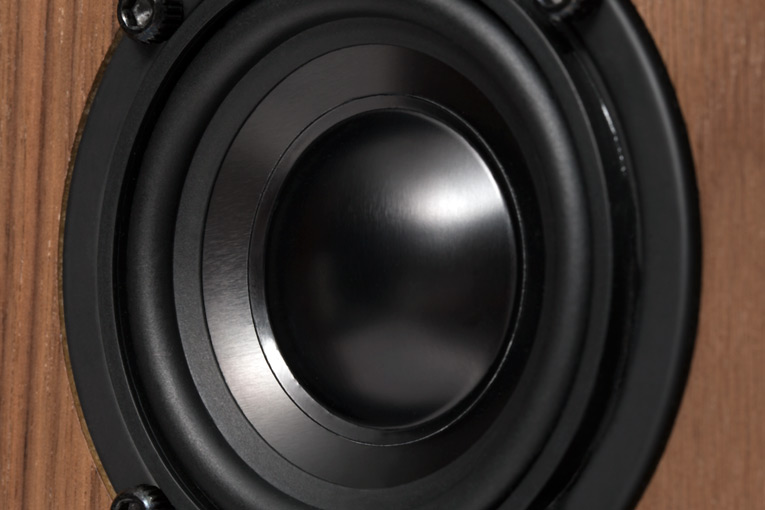
Another strength of the Mini A was the clarity and openness of its midrange (500Hz-5kHz), where most of the musical information received by our ears/brain falls -- it’s no exaggeration to say that one’s impressions of a speaker will largely be dictated by its performance in this region.
With the Brystons, I found myself playing a lot of well-recorded voices, including that of Tori Amos on her Boys for Pele (CD, Atlantic 82862-2). Here, Amos’s voice is so closely miked that her breathing and the sound of her lips moving are audible. This produces a more intimate, forward sound that casts a bright spotlight on voice and words alike. I could hear the space around Amos in some of the quieter tracks, which provided these performances with an almost eerie sense of realism. In “Muhammad My Friend,” her Bösendorfer piano sounds grand and powerful, but it was the openness of her voice -- or, more specifically, the clarity of the space around it -- that the Mini A’s captured so well. Listening to the next two songs, “Hey Jupiter” and “Way Down,” I again, predictably, focused on Amos’s singing as the Brystons continued resolving, with ease, the most subtle details of her voice.
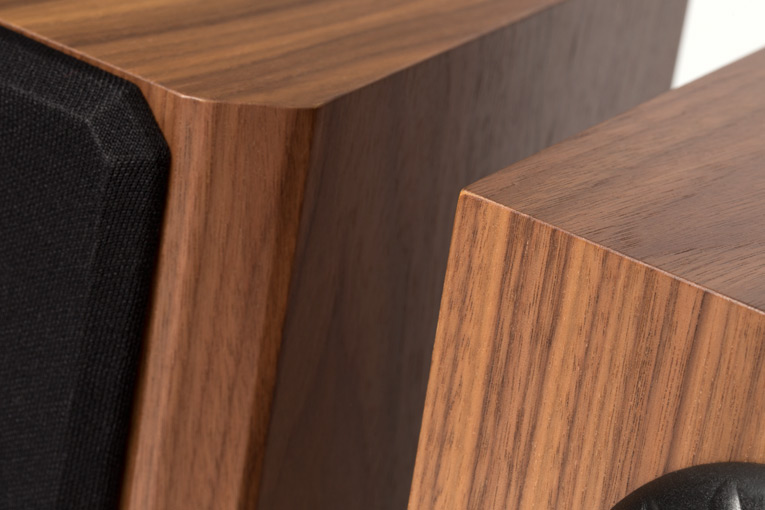
Switching to a male singer -- baritone Stephan Genz, accompanied by pianist Roger Vignoles in lieder by Beethoven (CD, Hyperion CDA67055) -- proved interesting. These art songs are less well known than much of Beethoven’s other work, and there’s little evidence that they were ever formally performed in his lifetime. Listening to “An die Hoffnung,” Op.94, what most attracted my attention was the Brystons’ excellent portrayal of the power and dynamics of Genz’s singing. His performance was captivating through the Mini A’s -- the speakers’ ability to go effortlessly from soft to loud was admirable for a fairly small speaker.
Comparison
I listened to the Bryston Mini A’s alongside my reference speakers, Amphion’s Argon3Ls ($4500/pair). Unlike the three-way Bryston, the Argon3L is a two-way floorstander that combines a 1” titanium-dome tweeter with a 6.5” aluminum midrange-woofer. Each model has a clean, transparent sound that reveals an abundance of detail in well-recorded music, and both can produce tight, focused images that help create a believable soundstage in my room.
The Brystons differed from the Amphions in sounding more forward, as I heard when listening to the a cappella “Me and a Gun,” from Tori Amos’s Little Earthquakes (CD, Atlantic 82358-2). Switching from the Amphions to the Brystons, it was as if Amos had moved forward -- her voice now sounded considerably closer to me. This gave her more presence in the room, which made for a more engaging sound.
The same was true of “Society,” from Eddie Vedder’s music for the film Into the Wild (CD, J-Records 88697-15944-2). Through the Mini A’s, Vedder’s voice seemed to jump out more at me; the Argon3Ls sounded a touch more laid-back. In direct comparison with the Brystons, the Amphions reproduced this track with a greater feeling of space, but the sound seemed a bit more distant.
The ability to sound bigger and more spacious was certainly a function of their respective sizes, so it was no surprise that, while they did a fine job of reproducing good, clean bass from Big Boi’s “Hustleblood,” the Mini A’s simply couldn’t match the low-end grunt of the Argon3Ls. Granted, I could crank the Mini A’s to high volumes and still enjoy clean sound, but that only produced louder bass, not deeper bass. Besides, as already mentioned, if you like the Mini A’s sound but want a heftier low end, you need only look to one of Bryston’s tower speakers or subwoofers to find it.
Conclusion
At $1200/pair, Bryston’s Mini A offers the potential buyer an interesting proposition. This solidly constructed, well-designed speaker not only sounds neutral and clean, it also can handle being played loudly without obvious dynamic compression or distortion. The audio marketplace has no shortage of megabuck speakers from companies that tout groundbreaking technology, design, and exotic materials. Some of this was on display this year at High End, in Munich. Next to that competition, the no-frills Mini A gets on with the business of producing superb sound at a price within the reach of many. Add to this Bryston’s 20-year warranty, and the Mini A seems not only a good investment, but a sensible one.
. . . Philip Beaudette
philipb@soundstagenetwork.com
Associated Equipment
- Speakers -- Amphion Argon3L, Revel Performa3 F206
- Integrated amplifier -- Bryston B135 SST2
- Digital sources -- Apple MacBook computer running Audirvana, Bryston BDA-2 DAC, NAD C 565BEE CD player
- Speaker cables -- AudioQuest Comet
- Interconnects -- Kimber Kable Tonik
- Digital cables -- AudioQuest Forest USB, i2Digital X-60 coaxial
- Power conditioner -- ExactPower EP15A
Bryston Mini A Loudspeakers
Price: $1200 USD per pair.
Warranty: Twenty years parts and labor.
Bryston Ltd.
677 Neal Drive
Peterborough, Ontario K9J 6X7
Canada
Phone: (800) 632-8217, (705) 742-5325
Fax: (705) 742-0882
Website: www.bryston.com






















